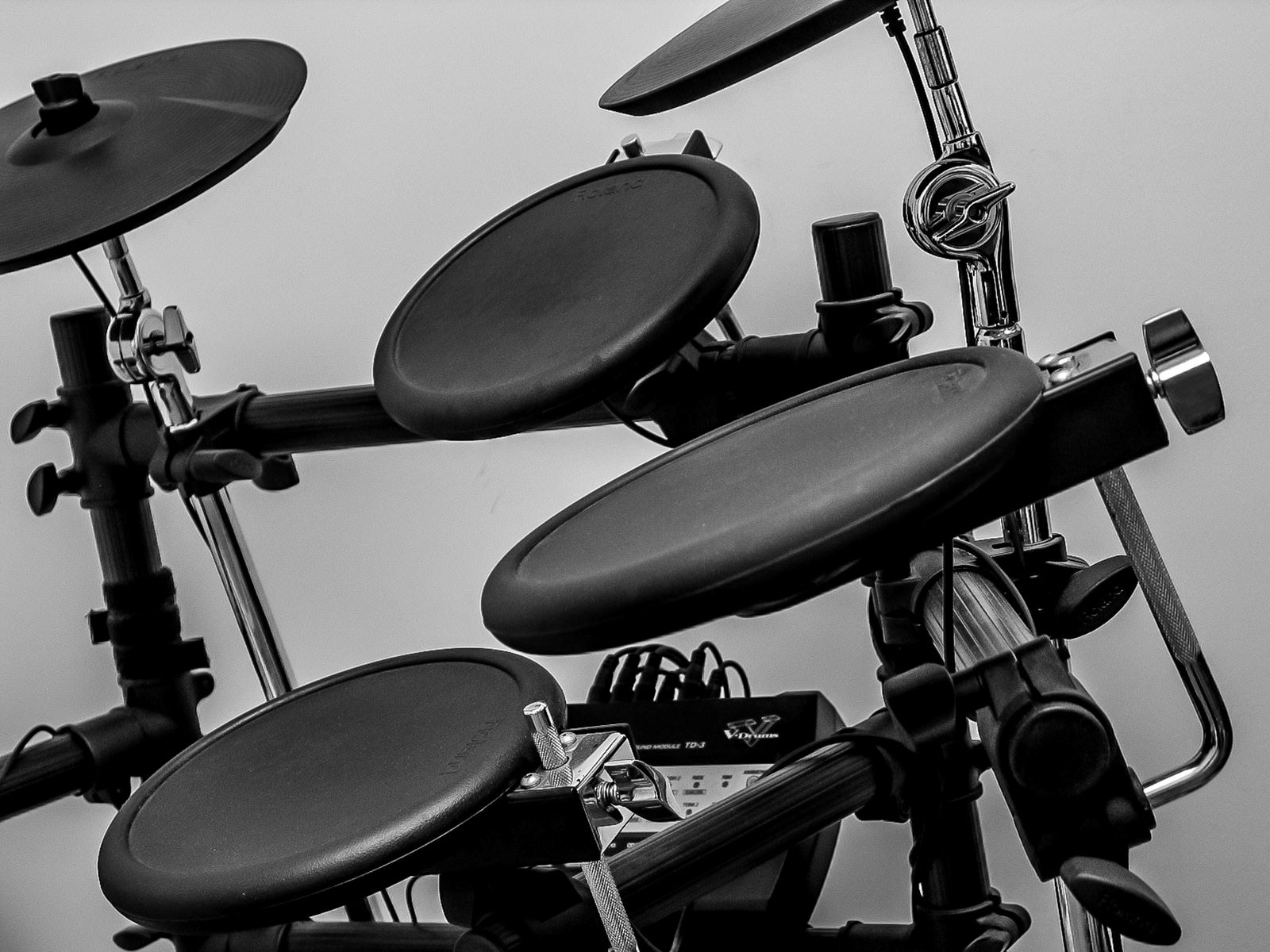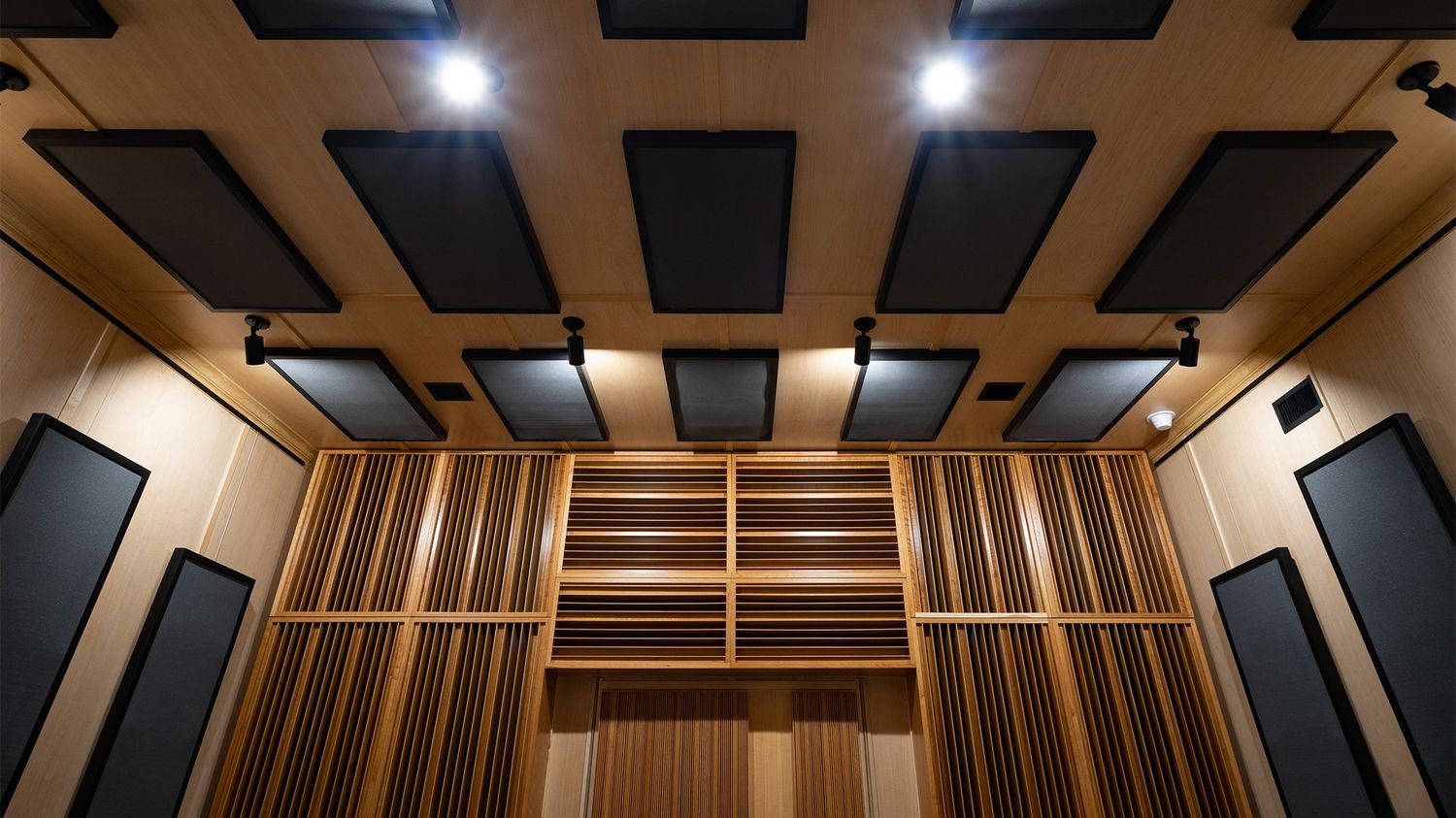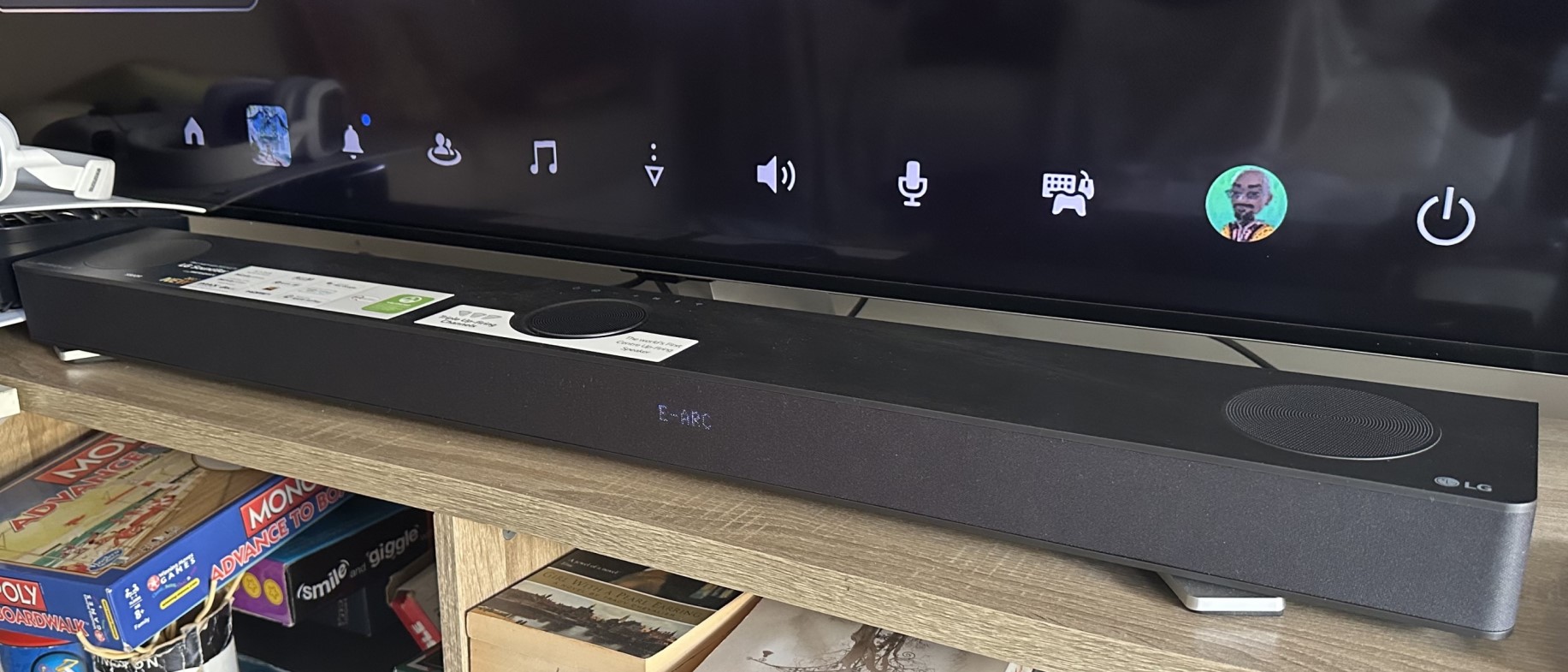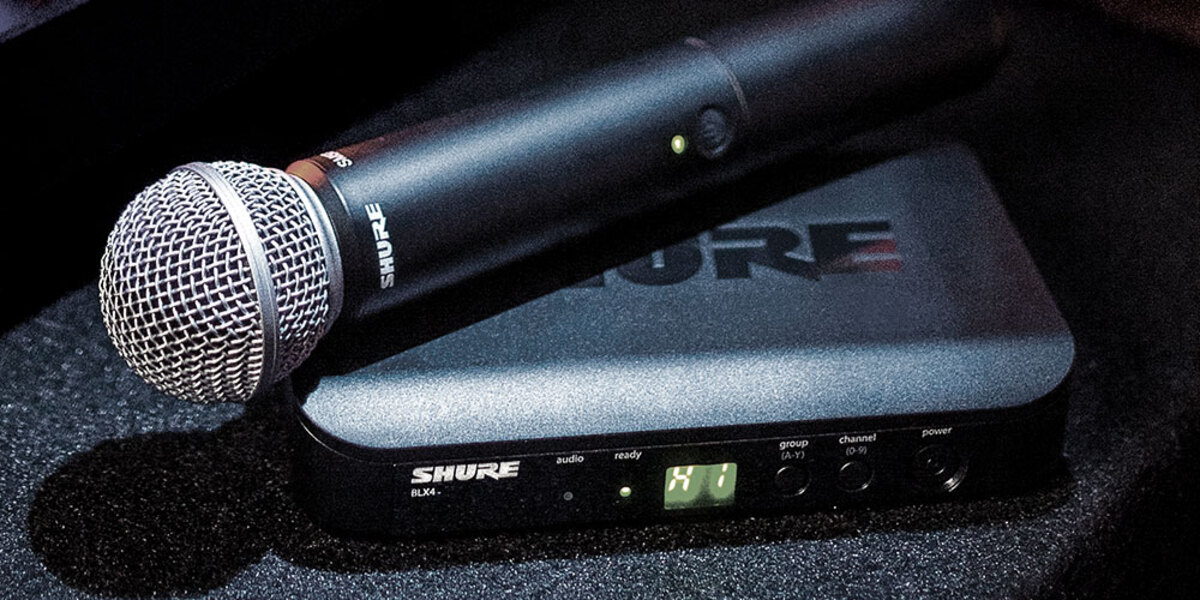Home>Devices & Equipment>Radio>How Do Radio Towers Work


Radio
How Do Radio Towers Work
Modified: January 22, 2024
Discover how radio towers work and why they are crucial for transmitting signals. Explore the fascinating world of radio technology and learn how radio waves facilitate communication.
(Many of the links in this article redirect to a specific reviewed product. Your purchase of these products through affiliate links helps to generate commission for AudioLover.com, at no extra cost. Learn more)
Table of Contents
Introduction
Radio towers play a vital role in the world of communication, allowing for the transmission and reception of radio signals over long distances. These towering structures are a familiar sight on the horizon, often reaching impressive heights and serving as beacons of connectivity. But have you ever wondered how they actually work?
In this article, we will delve into the fascinating world of radio towers, exploring their basic components, the process of transmitting and receiving signals, the importance of antenna and signal strength, tower design and maintenance, and the safety measures involved.
Radio towers serve as the backbone of numerous communication systems, including radio broadcasting, mobile networks, and emergency services. They allow us to stay connected, informed, and entertained, all while facilitating essential communication during times of crisis.
Take a moment to imagine a world without radio towers—no music playing on your car radio, no breaking news alerts, and no reliable cell phone service. It’s hard to comprehend the impact that these towering structures have on our daily lives and the seamless connectivity they provide.
So buckle up as we embark on a journey to demystify the inner workings of radio towers. By the end of this article, you’ll have a newfound appreciation for these colossal structures that silently facilitate our widespread communication efforts.
Basic Components of a Radio Tower
Radio towers consist of several key components that work together to facilitate the transmission and reception of radio signals. Understanding these components is crucial to grasp the functionality behind these impressive structures.
The primary components of a radio tower include:
- Tower Structure: The tower itself is the main framework that supports all the other components. It is typically made of steel or reinforced concrete and is designed to withstand various environmental conditions like wind, rain, and even seismic activity.
- Antenna: The antenna is a crucial element of the radio tower as it is responsible for emitting and receiving radio waves. The antenna converts electrical signals into electromagnetic waves and vice versa. Depending on the purpose of the tower, the antenna can be omnidirectional, transmitting signals in all directions, or directional, focusing the signal in a specific direction.
- Transmitter: The transmitter is the device that generates and amplifies the radio signals to be transmitted. It takes the input signal, such as audio or data, and converts it into a form suitable for transmission through the antenna. The transmitter ensures that the signal is strong enough to cover the desired range.
- Receiver: The receiver is responsible for capturing and decoding the radio signals received by the antenna. It amplifies and demodulates the signals, extracting the original information that was transmitted. The receiver then sends this information to the desired destination, whether it’s a radio station or a mobile device.
In addition to these key components, radio towers also feature supporting equipment such as power sources, transmission lines, and various electronic controls to ensure efficient signal transmission and reception.
Now that we have a better understanding of the basic components of a radio tower, let’s explore how these components work together to transmit and receive radio signals.
Transmitting Signal
When it comes to transmitting a signal, the radio tower plays a crucial role in ensuring that the message reaches its intended destination. Here’s a breakdown of the process involved in transmitting a radio signal:
- Input Signal: The process begins with the input signal, which can be audio data, such as music or speech, or digital data, like text messages or internet data. This input signal is fed into the transmitter equipment located at the base of the radio tower.
- Modulation: The input signal is then modulated, meaning it is converted from its original form into a format suitable for transmission. This modulation process typically involves amplitude modulation (AM) or frequency modulation (FM), depending on the type of radio system being used.
- Amplification: Once the signal is modulated, it undergoes amplification to increase its strength. This ensures that the signal is powerful enough to be transmitted over long distances and to overcome any obstacles that may weaken or interrupt the signal.
- Feed to the Antenna: After amplification, the signal is fed to the antenna located at the top of the radio tower. The antenna then radiates the signal in the desired direction, either for omnidirectional coverage or focused transmission.
- Transmission through Electromagnetic Waves: The antenna converts the electrical signal into electromagnetic waves that travel through the air or space. These waves propagate through the atmosphere or vacuum at the speed of light, carrying the modulated information.
- Reception and Decoding: At the receiving end, another antenna captures the transmitted electromagnetic waves. The receiver equipment at this end processes the received signals, demodulates them to extract the original information, and sends it to the appropriate destination.
This process allows for the effective transmission of radio signals over long distances, ensuring reliable communication and connection between transmitters and receivers.
Now that we understand how radio signals are transmitted, let’s explore the fascinating process of receiving signals in the next section.
Receiving Signal
Receiving a radio signal is equally important as transmitting it. Without a proper reception, the intended message or information cannot be effectively communicated. Here’s an overview of how the radio tower receives signals:
- Antenna Capture: At the receiving end, an antenna mounted on the radio tower captures the transmitted electromagnetic waves. The antenna acts as a receiver and collects the incoming signals from the air or space.
- Signal Amplification: Once the antenna captures the signals, they are then amplified to ensure they are strong enough for further processing. Amplification helps to boost the weak signals that may have traveled a significant distance or have been affected by interference.
- Demodulation: After amplification, the received signal goes through the process of demodulation. Demodulation reverses the modulation process that was applied during transmission. This process extracts the original information embedded in the signal, such as audio, data, or video.
- Decoding: With the demodulated signal, the receiver equipment decodes the information into its original format. For example, audio signals are converted back into sound, and digital data is transformed back into its digital form.
- Output Signal: Once the received signal is decoded, it is sent to the appropriate output device, such as speakers, displays, or data receivers. This allows the recipient to perceive and utilize the information that was transmitted.
Receiving signals accurately is crucial for maintaining clear and seamless communication. The ability of the radio tower to capture and process signals ensures that the intended message or information is received and understood.
Now that we have covered the process of transmitting and receiving signals, let’s explore the overall communication process facilitated by radio towers.
Communication Process
The communication process facilitated by radio towers involves the transmission and reception of signals between a sender and a receiver. Here’s an overview of the communication process:
- Message Creation: The communication process begins with the creation of a message or information that needs to be transmitted. This can be in the form of speech, music, data, or any other form of communication.
- Encoding: The message is then encoded into a format suitable for transmission. This encoding process converts the information into a signal that can be modulated and transmitted through the radio tower.
- Transmission: The encoded signal is transmitted from the sender’s location through the radio tower. The tower acts as a medium to carry the signal and ensure its efficient transmission to the intended receiver.
- Reception: At the receiver’s end, the radio tower’s antenna captures the transmitted signal. The tower’s receiver equipment then processes the signal, demodulates it, and extracts the original message or information.
- Decoding: The demodulated signal is decoded to convert it back into its original form. This allows the receiver to understand and perceive the message that was initially created by the sender.
- Message Interpretation: Once the message is decoded, the receiver interprets the information and comprehends its meaning. This step allows for understanding, responding to, and acting upon the received message.
The communication process enabled by radio towers plays a crucial role in various industries and sectors, including broadcasting, emergency services, military operations, and everyday personal communication. It allows for real-time information exchange, connecting individuals and communities across vast distances.
Now that we’ve explored the communication process, let’s delve into the significance of antenna and signal strength in radio tower operations.
Antenna and Signal Strength
The antenna and signal strength are two critical factors that contribute to the effective operation of radio towers. Let’s take a closer look at their significance:
Antenna:
The antenna is a fundamental component of a radio tower, responsible for transmitting and receiving radio signals. Its design and characteristics directly impact the performance and coverage of the tower. Here are a few key aspects of antennas:
- Omnidirectional vs. Directional Antennas: Omnidirectional antennas transmit signals in all directions, providing a 360-degree coverage area. This type of antenna is commonly used for broadcasting stations. On the other hand, directional antennas focus the signal in a specific direction, offering a narrower coverage area but more targeted transmission. They are often used for point-to-point communication.
- Gain: The gain of an antenna refers to its ability to focus or amplify the signal in a specific direction. Higher gain antennas can transmit signals over longer distances and provide better coverage, but they typically have a narrower beamwidth. Understanding the gain of an antenna is crucial for optimizing signal strength.
- Height and Placement: The height of the antenna above the ground plays a significant role in signal propagation. Generally, the higher the antenna is placed, the wider the coverage area and the better the signal quality. Additionally, careful consideration is given to the placement of the antenna to minimize interference and improve the reception of signals.
Signal Strength:
Signal strength refers to the power and intensity of the radio signal being transmitted or received. It is a crucial factor in determining the quality and reach of communication. Several factors affect signal strength, including:
- Transmission Power: The power at which the signal is transmitted from the radio tower greatly influences signal strength. Higher transmission power allows for the signal to travel over greater distances and penetrate obstacles more effectively.
- Interference: Interference from other electronic devices, geographical features, or atmospheric conditions can weaken or distort the signal. Minimizing interference through proper antenna placement, signal filtering, and other techniques is essential to maintain strong signal strength.
- Propagation Loss: The signal strength diminishes with distance due to propagation loss. It is important to factor in this loss when determining the coverage area and ensuring that the signal remains strong within the intended range.
Optimizing antenna design, placement, and signal strength is instrumental in achieving reliable and efficient communication through radio towers. The combination of a well-designed antenna system and sufficient signal strength ensures seamless connectivity and effective transmission and reception of messages.
As we explore the functionality of radio towers, let’s now delve into the design and height considerations associated with these towering structures.
Tower Design and Height
The design and height of a radio tower are critical factors that influence its functionality, coverage range, and overall performance. Let’s take a closer look at these considerations:
Tower Design:
The design of a radio tower is carefully engineered to meet specific requirements and withstand various environmental conditions. Some key aspects of tower design include:
- Structural Integrity: Radio towers are constructed using materials like steel or reinforced concrete to ensure stability and strength. The tower’s design incorporates structural elements such as trusses, lattice, or monopoles to support the antenna and withstand wind, seismic activity, and other forces.
- Foundation: The foundation of a radio tower is crucial for providing stability and support. Typically, tower foundations are built with deep concrete footings or pilings to anchor the tower securely to the ground and distribute the weight evenly.
- Climbing and Maintenance: Consideration is given to the ease of access for maintenance personnel who need to climb the tower. Safety features such as ladder rungs, platforms, and safety lines are incorporated into the tower’s design to ensure the safety of those working at heights.
Tower Height:
The height of a radio tower directly impacts its coverage range and signal propagation. Key factors to consider when determining tower height include:
- Line-of-Sight: Higher towers can improve line-of-sight communication, allowing signals to travel over longer distances without obstruction. This is especially important for point-to-point communication systems.
- Terrain and Obstacles: The height of the tower is influenced by the surrounding terrain and any obstacles that may hinder signal propagation. Towers are strategically placed to overcome obstacles such as buildings, trees, and other geographical features.
- Frequency and Coverage: The frequency of the radio signals being transmitted also plays a role in determining tower height. Lower-frequency signals require taller towers for better coverage due to their longer wavelength, while higher-frequency signals can be effectively transmitted with shorter towers.
The design and height considerations of radio towers are crucial in achieving optimal coverage, signal strength, and overall performance. Expert engineering and careful planning ensure that these structures can meet the demands of modern communication systems and provide reliable connectivity.
As we explore the world of radio towers, it’s important to consider the maintenance and upkeep required to ensure their functionality and safety. Let’s delve into these aspects in the next section.
Maintenance and Upkeep
The maintenance and upkeep of radio towers are essential to ensure their continued functionality, reliability, and safety. Here are some key aspects related to tower maintenance:
- Regular Inspections: Proper maintenance begins with regular inspections of the tower structure, foundation, and all associated components. These inspections help identify any signs of wear and tear, damage, or structural issues that need attention.
- Equipment Maintenance: In addition to the tower structure, the equipment housed within the tower, including transmitters, receivers, antennas, and communication systems, must undergo routine maintenance. Regular testing, cleaning, and calibration of the equipment are necessary to keep it in optimal working condition.
- Site and Grounds Maintenance: The area surrounding the tower should be maintained to ensure accessibility and safety. This includes keeping the grounds clear of debris, vegetation, or any other obstacles that may pose a risk or interfere with signal transmission.
- Emergency Backup Systems: Radio towers often have backup systems, such as power generators or battery backup, to ensure continued operation during power outages or emergencies. Regular maintenance and testing of these backup systems are necessary to ensure their functionality when they are needed most.
- Compliance with Regulations: Radio towers must comply with local regulations and guidelines concerning safety, electromagnetic radiation, and environmental impact. Regular maintenance and inspections help ensure that the tower meets the required standards and avoids any potential legal issues.
Maintenance schedules and procedures can vary based on factors such as tower height, location, and the specific equipment installed. It is important to follow manufacturer recommendations and industry best practices when establishing and carrying out maintenance protocols.
Efficient maintenance and upkeep not only ensure the smooth functioning of the tower but also contribute to the safety of the tower and the individuals involved in its operation. By investing in regular maintenance, potential issues can be identified and addressed before they lead to more significant problems or interruptions in communication services.
As we continue to explore radio towers, let’s now examine the safety measures that are implemented to protect those who work on and around these structures.
Safety Measures
Radio towers are imposing structures that require strict adherence to safety measures to protect the workers and ensure the overall well-being of all individuals involved. Here are important safety measures implemented in relation to radio towers:
- Training and Education: Workers involved in tower maintenance and operation undergo rigorous training and education on safety protocols. This includes understanding the proper use of safety equipment, climbing techniques, and emergency response procedures.
- Personal Protective Equipment (PPE): Workers are required to wear appropriate PPE, such as helmets, safety harnesses, gloves, and high-visibility clothing. PPE helps protect against potential hazards and ensures greater safety while working at heights.
- Fall Protection: Tower climbers utilize fall protection mechanisms, such as safety harnesses, lanyards, and climb systems, to prevent falls while working at heights. These systems provide a lifeline and serve as a safety net to mitigate the risk of injury.
- Regular Inspections and Maintenance: Inspections and maintenance protocols are not only crucial for the functionality of the tower but also for identifying potential safety hazards. Regular inspections help identify and address any issues that may compromise the integrity or safety of the tower and its equipment.
- Warning Signs and Barricades: To ensure the safety of individuals in close proximity to the tower, clear and visible warning signs and barricades are placed around the base of the tower. These signs alert people to the presence of potential hazards and prevent unauthorized access.
- Electromagnetic Radiation Safety: Radio towers emit electromagnetic radiation, and precautions are taken to ensure compliance with safety regulations regarding exposure limits. These limits are designed to protect both workers and the general public from prolonged exposure to high levels of electromagnetic radiation.
- Emergency Preparedness: Emergency response plans are put in place to address potential accidents or incidents that may occur during tower operations. These plans outline the necessary steps to be taken in the event of an emergency and establish clear communication channels to coordinate rescue and recovery efforts.
By strictly implementing safety measures, the risks associated with working on and around radio towers can be minimized. Safety protocols not only protect the workers but also contribute to the overall efficiency and reliability of tower operations.
As we reach the end of our exploration of radio towers, let’s reflect on their significance and the impact they have on our daily lives.
Conclusion
Radio towers are the unsung heroes of modern communication, facilitating the transmission and reception of radio signals that keep us connected, informed, and entertained. These towering structures are meticulously designed and engineered to ensure reliable signal transmission and coverage over vast distances.
In this article, we explored the basic components of a radio tower, including the tower structure itself, the antenna, transmitter, and receiver equipment. We learned about the intricate process of transmitting and receiving signals, as well as the overall communication process facilitated by these towers.
We also discussed the significance of antenna design and signal strength in ensuring effective communication, emphasizing the importance of tower height, placement, and propagation for optimal signal coverage.
Maintenance and upkeep are essential to ensure the continued functionality, reliability, and safety of radio towers. Regular inspections, equipment maintenance, and compliance with safety regulations are key aspects of maintaining these towering structures.
Throughout our exploration, we emphasized the criticality of safety measures implemented in relation to radio towers. From comprehensive training and the use of personal protective equipment to fall protection mechanisms and adherence to electromagnetic radiation safety regulations, these measures prioritize the well-being of workers and the general public.
Overall, radio towers play a vital role in our everyday lives, enabling seamless communication across vast distances. They connect us to our favorite radio stations, deliver crucial emergency alerts, empower mobile networks, and ensure reliable communication in times of need.
As we appreciate the significance of radio towers and the complex processes involved, let us recognize the dedication and expertise of the individuals who work tirelessly to install, maintain, and operate these impressive structures, ensuring that communication continues to thrive in our ever-connected world.
Next time you gaze upon a radio tower dotting the horizon, take a moment to appreciate the incredible engineering and craftsmanship behind it, and the countless connections it facilitates every day.











